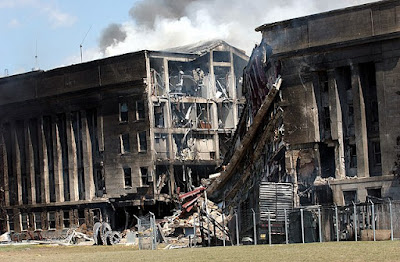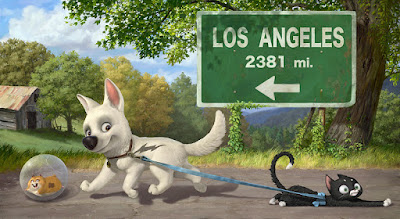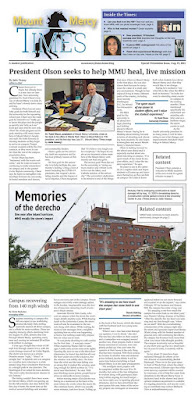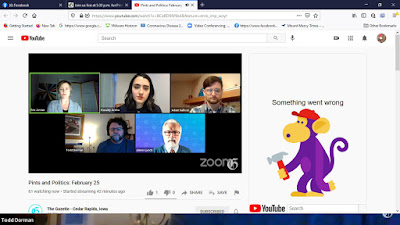 |
| "Get your shots or I'll whack you with my shovel." Probably not the winning message. |
Misinformation and mistrust have poisoned our response to COVID-19, and the dark days are not yet behind us.
Which surge are we in? The third? Fifth? I’ve lost count, but as a deadly, infectious virus again fills our hospitals—largely with unvaccinated people—I wonder how we can be more effective in getting Americans to take this scourge seriously—to do what we need to do to knock this pandemic down.
The science isn’t too mysterious. Social distance. Mask. Frequently test. Be vaxed and boosted. Don’t seek medical advice from political sites or random social media memes. Do your own research—if you have a pHd in science. Otherwise, pay attention to those who do valid research, not the proverbial 400-pound man in his basement. (For the record, I do look like Santa, but I am not 400 pounds—yes, I am writing this in my basement.)
But science is not enough. When it’s not believed, it’s not working. Omicron is highly transmissible and American are highly resistant to giving two hoots. Mandates for large employers, the military, healthcare workers and first responders may help with the vaccination rates, but pushing people who don’t believe also makes them push back harder.
The herd can’t become humanely immune if the herd won’t hear what must be heard.
Granted, we’ve seen massive failures of political leadership. This pandemic has been politicized, which is a costly tragedy. We once had a president who told us to consider injecting bleach, and we have many so-called pundits promoting quack cures and spreading mistrust of those who should be trusted. In Iowa, our governor assures us we will “do the right thing,” when it’s patently obvious too many Iowans would rather just do the right-wing thing, even when it’s wrong.
I find myself wondering, WWSTBD? What would Smokey the Bear do?
Most of use remember Smokey. He reminded us that only we can prevent forest fires. It didn’t end fires—climate change had led to some massive wildfires in recent times—but that old bear did raise awareness and changed behavior in his day.
And Smokey isn’t the only example of a PSA avatar that has done us some good. Remember the “crying Indian” from 1971? That PSA actually helped reduce littering, and fueled an environmental movement that, even if it can be controversial, has led to a cleaner country.
Neither Smokey nor the Native American who was actually an actor of Italian ancestry were 100 percent successful, and neither symbolizes a problem that was completely licked. But problems don’t work that way. Big problems aren’t so much solved as abated, and I would like more pandemic abating.
One thing that I think has been lacking in our anti-COVID efforts is an effective symbol and slogan. We can shout at each other about facts and disinformation, but we need some messaging that hits us on a more elemental level. We need a COVID equivalent of insurance Flo or the Geico gecko. We need a slogan like “only you can prevent forest fires.” (“Only you can knock down a deadly virus?”) We need messaging that is factually accurate but that is also not a dry recitation of facts—something that will play on patriotism, loyalty, doing what’s right, working together. We don’t just need to hear, we need to feel.
Rosie the Riveter needs to roll up her sleeve for a needle.
I’ve been looking at a few COVID PSAs, and they have information and aren’t always terrible, although sometimes they are also plodding and dull. The CDC has a gabagillion videos on its YouTube channel, but none has yet gone viral. Here is a CDC PSA and another attempt from a medical school, followed by an NHS Facebook ad from the UK, which I think does a better job:
We don’t have a snappy slogan. A compelling character full of pathos. A key, concise, positive message. Something that we should push with a billion marketing dollars to spread a positive, life-saving message.
Get your shot. Wear your mask. Be boosted. Get tested. Fine, but which of those would mean something on a bumper sticker? Those are the messages, but not the means to our hearts nor the memes we would share.
 |
| CDC PSA. Fine, but where's Smokey? |
 |
| Again, OK. But "Proven Safe and Effective" could be a shampoo ad. |
I’m not an ad writer, I don’t know what would work. But I see lots of ads for cells phones, promos for shows, snazzy productions for deodorants—my Christmas media wish would be for us to be awash in ads that have more meaning and that could have more impact.
So come on, science. Hear me, Joe Biden. Bring it on. Find the right Mad Men. If not Smokey, Nellie the Nurse. Ashley the Elf who survived Covid? The vax fox? I know I want something even if I’m sure exactly what it is. But when I’m humming the tune of that catchy vax jingle, that may be important progress.






































